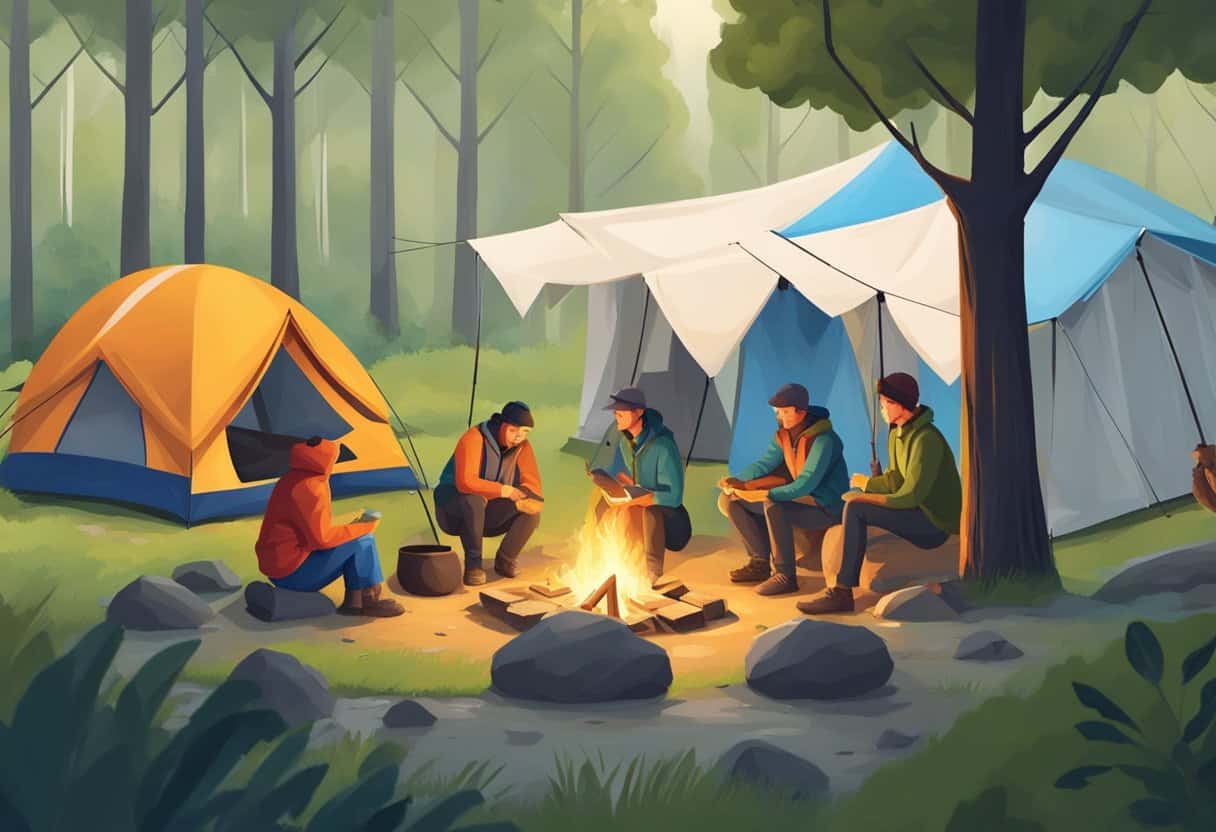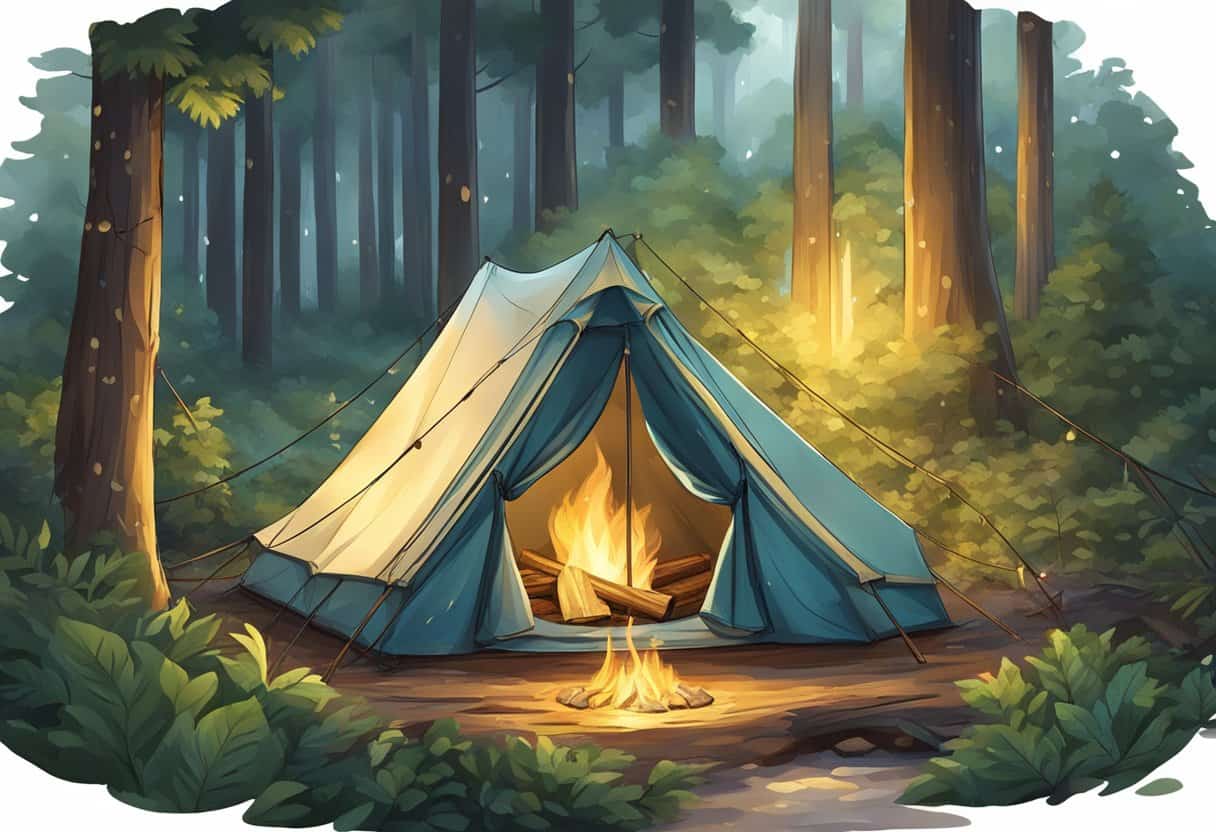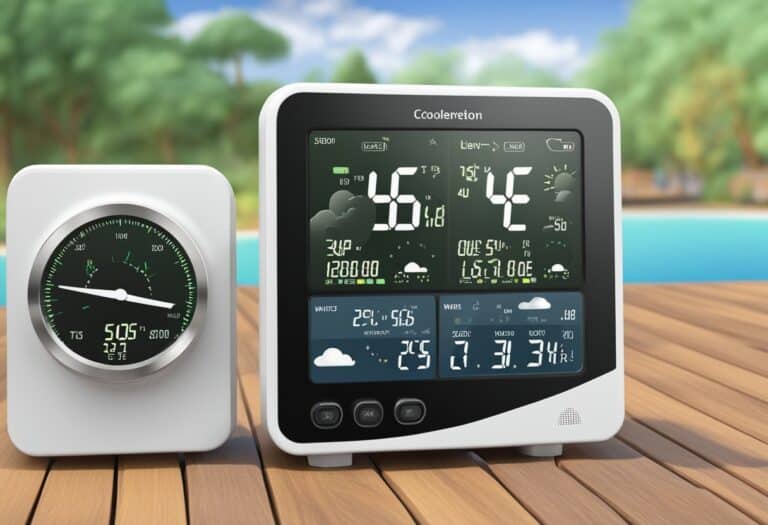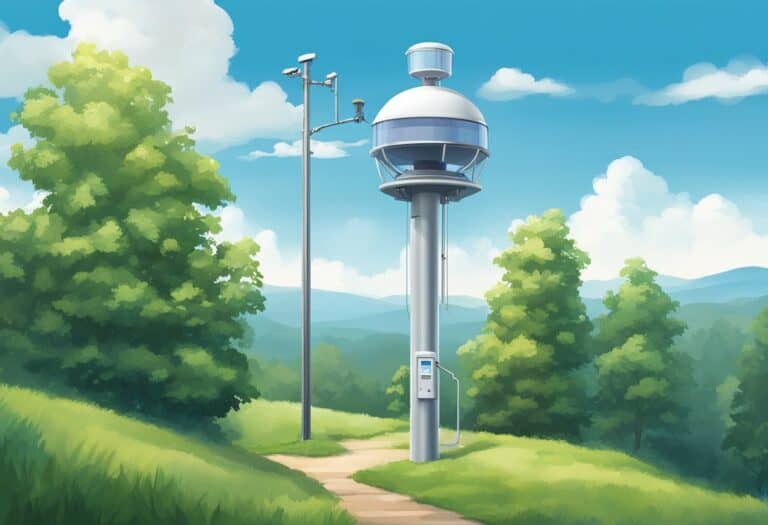Camping in the rain presents a unique set of challenges that can make or break your outdoor experience.
Being prepared with the right gear and knowledge about handling inclement weather is crucial to ensuring that your time spent in the great outdoors is safe and enjoyable. Waterproof equipment, appropriate clothing, and a solid plan can turn the dampness of a rainy day into an invigorating backdrop for your camping adventure.
Choosing the right campsite is also essential when you’re faced with rain. A spot that offers natural shelter from the elements, good drainage, and safety from any rain-induced issues like flash flooding can significantly improve your comfort level.
Beyond setup, engaging in the right activities and maintaining a positive attitude will help you make the most out of your rainy camping trip.
For a successful camping experience in the rain, prioritize waterproof gear, choose a high, well-draining campsite, and maintain a positive mindset. Utilize tarps for extra shelter, pack moisture-wicking clothing, and embrace wet-weather activities for enjoyment. Remember, proper preparation transforms rain into an invigorating part of your adventure.
Preparing for Rainy Camping
When camping in rainy conditions, it is essential to select appropriate gear and strategically plan each aspect of your trip to ensure both comfort and safety. From choosing the right tent to setting up your campsite, a little preparation can go a long way in managing wet weather.
Choosing the Right Tent
Your tent is your shelter from the rain, so it’s critical to choose one that’s up to the task. Look for a tent with a sturdy rainfly that extends over the entrance and consider a model with a vestibule for storing wet gear. Ensure the tent fabric is waterproof and use a seam sealer on all joins to prevent leaks.
Essential Rain Gear
To stay dry, pack a variety of rain gear, including a waterproof jacket, ponchos, and gaiters. Use dry bags and waterproof containers to keep your belongings from getting soaked. Don’t forget to carry waterproof matches or a fire starter for warmth and cooking.
Packing Smart for the Wet Conditions
Organize your gear in waterproof backpacks and use a checklist to ensure you don’t forget essential items like extra batteries for lighting, a tarp for additional overhead protection, and enough towels for drying off.
Selecting Appropriate Clothing
Layering is key in rainy weather. Start with a base layer of moisture-wicking materials, add an insulation layer, and top off with a waterproof shell. Pack extra socks, preferably merino wool, and avoid cotton clothing as it absorbs moisture and can lead to hypothermia.
Planning Your Meals
Rain can make meal prep challenging. Pre-plan and pre-pack meals that require minimal cooking. Ensure you have a reliable camping stove and always have comfort food that is easy to prepare, like hot drinks and soups, that can help warm you up from the inside.
Assessing the Campsite
Choose a tent site on high ground away from bodies of water to avoid flooding. Look for natural shelters such as large trees, but be cautious of tree limbs that could fall in strong winds. Utilize a tarp beneath your tent for extra moisture protection.
Understanding and Monitoring Weather
Keep a close eye on the weather forecast leading up to and during your trip. Understanding the weather pattern can help you plan accordingly and be ready to adjust your activities or shelter setup if a storm is headed your way.
Setting Up Your Camp
When you pitch your tent, ensure your rainfly is secure and angled to deflect rain away from the entrance. Use a footprint or tarp under your tent for added insulation from the wet ground. Carefully consider airflow to maintain ventilation and prevent condensation.
Lighting and Campsite Illumination
Adequate lighting is important in the rain. LED flashlights and headlamps are more water-resistant and offer longer battery life. Set up a clothesline under a sheltered area to dry wet clothing, and ensure you have a secure place to store firewood to keep it dry.
Staying Dry While Camping
Camping in the rain doesn’t have to be a discomforting experience. With the correct use of tarps and canopies, secure storage for your belongings, and optimizing tent ventilation, you can enjoy a dry and cozy campsite despite wet weather.
Utilizing Tarps and Canopies
Tarps are versatile pieces of camping gear that shield you and your equipment from the rain. Set up a tarp above your tent as an additional layer of protection. Ensure the tarp extends beyond the tent’s perimeter to prevent rain from seeping in. A pop-up canopy offers a quick and easy shelter solution, providing a covered area where you can cook and relax away from the downpour.
Securing Your Belongings
Keeping your gear dry is crucial when camping in rainy conditions. Store essentials in dry bags or waterproof containers to safeguard them from moisture. Wear waterproof boots to keep your feet dry while trekking around the campsite. For electronics and items susceptible to water damage, waterproof bags are indispensable.
Optimizing Tent Ventilation
A well-ventilated tent is vital for staying dry while camping in the rain. Make sure your tent has functioning vents to reduce condensation build-up inside. Utilize the rain fly’s adjustable features to enable airflow while keeping the interior dry. Proper ventilation can prevent moisture accumulation that could otherwise lead to a damp and uncomfortable sleeping environment.
Campsite Activities in the Rain

When rain begins to fall during your camping trip, it doesn’t mean the end of fun activities. There are a number of enjoyable and engaging pastimes suitable for a rainy day at the campsite. You can partake in rain-proof games or even explore different entertainment options that can make a wet day just as memorable as a sunny one.
Engaging in Rain-Proof Games
Board Games: A variety of board games are ideal for keeping your group entertained inside a tent or under a shelter. Opt for games that have easy-to-handle pieces that won’t be ruined by moisture. Classics like Scrabble or Catan can offer endless entertainment and are perfect for enhancing your strategic skills during those rainy hours.
- Card Games: Your deck of cards is your best friend when it comes to rain. Card games, ranging from the evergreen Uno to strategic games like Poker or Bridge, can keep spirits high. Remember to bring waterproof playing cards to avoid damage from the rain.
Exploring Alternative Activities
Reading: Rainy days provide the perfect backdrop for catching up on reading. Whether it’s a thrilling novel or a camping guide, immerse yourself into the pages. If you’re interested in local flora and fauna, consider bringing a book on local wildlife to enhance your knowledge and prepare for sunny day explorations.
- Observing Wildlife: Animals are often active during and after the rain. If you have a sheltered spot or are well-equipped with waterproof gear, observing wildlife can be particularly rewarding. Be sure to maintain a safe distance, and use this as an opportunity to practice your patience and resilience.
Incorporating rain-safe activities into your camping trip ensures that the weather won’t dampen the spirits of your adventure. Keeping engaged with these alternatives helps cultivate a positive and adaptable camping experience.
Safety and Comfort
Camping in the rain requires attention to detail regarding your safety and comfort. Equipping yourself with the right knowledge on how to manage wet conditions is crucial to a successful outing.
Preventing Hypothermia
You must prioritize maintaining your body heat to prevent hypothermia, which can occur in wet and cold environments. The key is to keep your core temperature stable. This means wearing base layers made from materials like merino wool rather than cotton, as wool retains heat even when wet. A layering system is essential; start with a moisture-wicking layer, add insulation, and top with a waterproof jacket to guard against rain.
Managing Wet Gear and Clothing
Wet gear can escalate into a serious discomfort and safety issue. Always use a synthetic bag for sleeping, as it insulates better than down when wet. Drape wet clothes over a clothesline under a shelter to dry overnight. Store items in waterproof bags to keep everything dry. If you cannot dry your clothes, wearing rain pants and a jacket will provide temporary relief until you find a dry environment.
Navigating the Wet Terrain
The terrain can become challenging when it’s wet. To prevent slips and maintain stability, invest in good quality waterproof boots with excellent grip. Gaiters can also help keep your lower legs dry and add extra protection. When hiking near water bodies like a river or lake, be extra cautious as water levels can rise quickly. Use bright items like an orange pack cover to stay visible in heavy rain or mist.
Remember, the wilderness requires respect, especially in adverse weather. Your safety and comfort depend upon proper preparation and the right gear.
Returning Home
When you return home from a rainy camping trip, it’s crucial to carefully clean and store your gear, reflect on the camping experience, and plan for future wet-weather excursions.
Cleaning and Storing Gear
Firstly, carefully clean and dry your tent and camping gear to prevent mildew and damage. Unpack your backpacks as soon as possible, air out all waterproof gear, and wipe down any surfaces. Here’s a quick list to ensure you’ve covered everything:
- Tent: Shake out debris, dry thoroughly, and repair any damage.
- Sleeping bags: Air out and wash according to the manufacturer’s instructions.
- Cookware: Clean thoroughly to avoid attracting pests.
Reflecting on the Camping Experience
Take the time to reflect on your camping experience. What memories stand out? Did any particular hacks or camping tips work well for you? Jot down notes about what went well and what could be improved. As an outdoor enthusiast, each trip builds your expertise.
Planning for Future Rainy Camping Trips
Now, consider future trips. Review REI’s or other outdoor retailers’ camping in the rain checklist to see what items could enhance your next outing, such as better waterproofing or more functional gear. Update your personal checklist based on this experience to become even more prepared for next time.
Conclusion
When you’re tenting under the drizzle, your experiences are undeniably unique. Rain amplifies the sounds of nature, wraps your campsite in fresh scents, and can make for memorable moments with fellow campers, as found in a study of weather preferences among mountain tourists. Contrary to what some might think, moisture doesn’t have to dampen your spirits or your camping trip.
Be Prepared: Your Rainy Camping Checklist
- Tent with a robust waterproof rating
- Adequate tarps or footprint for additional shelter
- Weather-resistant clothing and extra layers
- Waterproof bags and containers for gear
While camping in the rain, preparation is paramount. Ensure your gear is waterproof or stored in watertight containers. This practicality coupled with a vibrant outlook can make your rainy escapade enjoyable. As camping resources suggest, even in scenarios of heavy rain and strong winds, a well-prepared camper can continue to revel in the outdoor experience. Remember, tales from soggy camping trips often become the most treasured stories.
Next time the clouds gather, embrace the challenge. You’re equipped not just with gear, but the insightful adroitness of a seasoned camper. Rainfall or shine, your adventure awaits.
Frequently Asked Questions
Proper preparation is essential to ensure a safe and enjoyable camping experience in the rain. These frequently asked questions will guide you through staying dry, managing mud, selecting the right gear, enjoying activities, and ensuring safety in wet weather conditions.
How can one stay dry while tent camping during rainy weather?
To stay dry while tent camping, ensure you have a waterproof tent with a robust rain-fly and consider setting up a tarp above your tent for extra protection. Choosing a campsite with natural cover, using moisture-wicking clothing, and setting up camp on higher ground away from water channels can also keep you dry.
What are some effective strategies for dealing with mud when camping in wet conditions?
Minimize mud issues by laying down gravel or tarps on high-traffic areas of your campsite. Wearing waterproof boots and gaiters can help keep your feet dry, and storing gear in waterproof bags prevents mud from getting onto your supplies.
What are the essential gears for maintaining warmth and comfort while wild camping in the rain?
Essential gear for warmth and comfort includes a waterproof tent with a solid rain-fly, insulated sleeping pads, moisture-wicking clothing, and a sleeping bag rated for the lowest temperatures you might face. Also, pack a waterproof and breathable jacket to stay both dry and warm.
What activities are recommended to enjoy while family camping on rainy days?
Engage in activities such as playing board games, enjoying hot drinks, telling stories, and educational nature crafts. Outdoor activities might include weather-safe camping pursuits in lulls of the storm like short hikes wearing proper rain gear or wildlife observation under the shelter.
What precautions should be taken when RV or pop-up camping during a rainstorm?
When RV or pop-up camping, park on stable and level ground to prevent sliding or tilting. Check that all seals and seams on windows, doors, and the roof are intact to avoid leaks. Anchor your awning and secure loose items around the campsite to prevent them from being blown away by strong winds.
Are there any safety considerations to be aware of when canoe camping in inclement weather?
When canoe camping, always wear a life jacket and be prepared to seek shelter on land in the case of severe weather. Avoid open water during lightning storms, and be mindful of rising water levels and currents which can dramatically change the environment and present serious camping safety risks.







